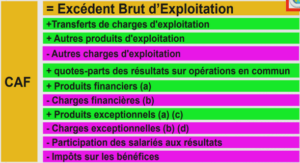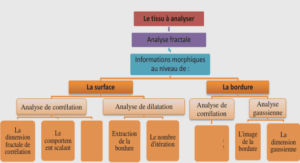What is music ?
The definition of music varies much with the context. In physics, music is a phenomenon characterized by frequencies and times while in social sciences, it is the reflection of a given culture at a given time. For artists music is the result of a personal and creative process ; in music theory, however, it is a complex entity defined by several rules of harmony. This work is in line with the field of music signal processing. Therefore, all musical notions will be defined as time-frequency events. We could go as far as saying that in such a context, a song is just a series of 0’s and 1’s we want to convert into a sequence of symbols. At the same time, all the research that has been conducted in Music Information Retrieval (MIR) tends to prove that a good understanding of music is often necessary in order to develop efficient algorithms. Thus it seems relevant to introduce some musical notions before describing our contributions.
A piece of music is composed of several sequences of notes played by different instruments. A note played by an instrument results in a complex time-frequency event depending on numerous parameters such as pitch, instrument, vibrato, intensity, etc. Yet, in theory, it is often assumed that a note k can be characterized by one fundamental frequency fk. These fundamental frequencies are not random: they are linked so that the notes sound good together. These notes can then group together in order to form scales. We can cite for example the diatonic scale, which is a 7-note musical scale comprising five whole steps and two half steps for each octave.
A chord is an aggregate of musical pitches sounded simultaneously. The name of a given chord depends on the number of notes within it. Chords can contain 2 (dyads), 3 (triads), 4 (tetrads), 5 (pentads), 6 (hexads) or more notes.
A chord can theoretically be composed of random notes ; in music theory, however, a chord forms an entity and is not just a set of notes. Indeed, a chord can be defined by three notions (Harte et al. (2005); Benward & Saker (2003)):
• root: the note upon which the chord is built;
• type: the harmonic structure of the chord (it also gives the number of notes in the chord);
• inversion: the relationship of the bass to the other notes in the chord.
Specifying these three characteristics is sufficient to define which notes are to be played in the chord, regardless of the octave. For instance, a Cmajor chord is defined by a root note C and a type major which indicates that the chord will also contain the major third and the perfect fifth, namely notes E and G .
There are many ways to write chords depending on time, music style or field of application. Some of them include wider notions such as key or harmony , while others only rely on chord definitions.
There is a very large number of possible chord types. Fujishima (1999), in the first audio chord recognition system, defines 27 chord types. So far, it is the publication which has considered the greatest number of chord types. The definitions of the main chord types are provided in the Appendix
The conception of chords as distinct entities (and not only as results of the superposition of melody lines) appeared in the 16th century, but the theorization of chords only began in the 17th century, with the emergence of tonal harmony (Baron (1973)). Harmony can be defined as the part of musical theory studying chords and how they can be used together for composition. The principle of tonal harmony originated in the observation that there is a very large number of note combinations which therefore can not all be studied. Which is why only a small number of chords are to be analyzed, because of their good auditive qualities. Music theorists of the 17th century such as Rameau (1722) attempted to build a coherent and universal harmony theory, relying both on mathematical principles (relations between the notes within the chord) and naturalism (study of the composition methods used until then). In particular, they underlined interesting note intervals for the construction of chords – the third or the fifth for example. These principles were notably implemented by Bach (1722) ; only then did we introduce the notion of key as a new entity in musical construction. “A key denote a system of relationships between a series of pitches (forming melodies and harmonies) having a key tonic (which is a note of the chromatic scale) as its most important (or stable) element” (Gómez (2006a)). There are two basic key modes: major and minor ; each of them defines a musical scale. Within a key, chords are composed primarily of the notes within the musical scale defined by the key. The triad chords are built by choosing one note over two within this scale. Therefore, a key naturally defines 7 chords, whose root and type are entirely determined by the key tonic and mode. In this particular case these chords can be written with Roman numerals, which indicate the role of the chords within a given key.
Nowadays, the notion of tonal harmony is still relevant in Western music genres such as rock, pop, jazz, electro, rap or hip hop. Nevertheless, the notion of key is now more blurred than it used to be and its definition is wider because of the use of more complex harmonic progressions or melodies. For instance, many pop songs now contain off-key chords.
1 Introduction |






